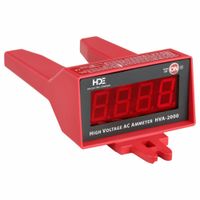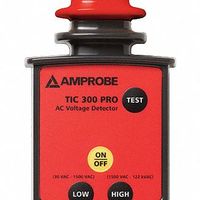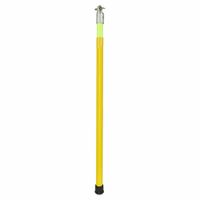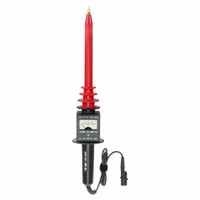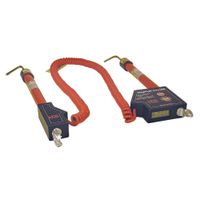Call +(254) 703 030 000 / 751 483 999 / 721 704 777
- Home
- Test Instruments
- Electrical Power Testing
- High Voltage Testers
.....Read More
Frequently Asked Questions
What is high-voltage testing equipment used for?
High-voltage testing equipment is used to evaluate the insulation and overall integrity of electrical components and systems that operate at high voltages. This equipment is crucial for ensuring the safety, reliability, and efficiency of electrical systems in various industries, including power generation, transmission, and distribution, as well as in manufacturing and research settings.
The primary purpose of high-voltage testing is to detect potential weaknesses or defects in insulation materials, which can lead to failures, breakdowns, or even catastrophic events if not addressed. By applying controlled high-voltage stress to electrical components, engineers can assess their ability to withstand operational voltages and identify any areas that may require maintenance or replacement.
High-voltage testing equipment is used for several specific tests, including:
1. **Dielectric Breakdown Testing**: Determines the maximum voltage an insulation material can withstand before it fails.
2. **Insulation Resistance Testing**: Measures the resistance offered by the insulation to the flow of current, indicating its effectiveness.
3. **Partial Discharge Testing**: Detects small electrical discharges within the insulation, which can indicate defects or deterioration.
4. **Hipot Testing**: Applies high voltage to ensure that the insulation can handle the operational voltage without breaking down.
5. **Impulse Testing**: Simulates lightning strikes or switching surges to test the component's ability to withstand transient over-voltages.
By using high-voltage testing equipment, engineers can ensure compliance with industry standards and regulations, extend the lifespan of electrical components, and prevent costly downtime or accidents. This equipment is essential for maintaining the safety and performance of high-voltage systems.
How do high-voltage detectors work?
High-voltage detectors are devices designed to identify the presence of high voltage in electrical systems, ensuring safety and preventing accidental contact with live circuits. They operate based on several principles, depending on their design and application.
1. **Electrostatic Induction**: Many high-voltage detectors use electrostatic induction to detect voltage. When brought near a live conductor, the electric field around the conductor induces a voltage in the detector. This induced voltage is then processed to trigger an alert, usually visual or auditory, indicating the presence of high voltage.
2. **Capacitive Coupling**: Some detectors use capacitive coupling, where the detector forms a capacitive link with the live conductor. The alternating electric field from the conductor induces a current in the detector, which is then used to signal the presence of voltage.
3. **Direct Contact**: In some cases, high-voltage detectors require direct contact with the conductor. These detectors measure the actual voltage present and are often used for more precise measurements. They are typically used by trained professionals with appropriate safety gear.
4. **Non-Contact Detection**: Many modern high-voltage detectors are non-contact, meaning they can detect voltage without direct contact with the conductor. These are particularly useful for quick checks and are safer for use by non-specialists.
5. **Signal Processing**: Once the presence of voltage is detected, the signal is processed by the detector's internal circuitry. This processing can involve amplification, filtering, and comparison against preset thresholds to determine if the voltage level is hazardous.
High-voltage detectors are essential tools in electrical maintenance and safety, providing a reliable means to ensure that circuits are de-energized before work begins. They are widely used by electricians, linemen, and maintenance personnel to prevent electrical accidents.
What are hot sticks and how are they used?
Hot sticks are insulated tools used by electrical utility workers to perform tasks on live electrical equipment without shutting down the power. These tools are essential for maintaining and repairing high-voltage power lines and equipment while ensuring the safety of the workers.
Hot sticks are typically made from materials like fiberglass-reinforced plastic, which provides the necessary insulation to protect workers from electrical shocks. They come in various lengths, allowing workers to maintain a safe distance from live electrical components. The length of the hot stick is determined by the voltage level of the equipment being worked on, with higher voltages requiring longer sticks.
These tools are equipped with various attachments and accessories to perform different tasks, such as tightening or loosening bolts, replacing fuses, or installing and removing line equipment. Common attachments include clamps, hooks, saws, and cutters, which can be easily swapped out depending on the task at hand.
Hot sticks are used in a variety of applications, including:
1. **Line Maintenance**: Workers use hot sticks to replace insulators, repair conductors, and perform other maintenance tasks on live power lines.
2. **Switching Operations**: Hot sticks are used to operate switches and disconnects on high-voltage lines, allowing for the safe isolation of sections of the power grid.
3. **Testing and Measurement**: Specialized attachments can be used to test voltage levels and measure current flow without direct contact with live components.
4. **Emergency Repairs**: In the event of a power outage or equipment failure, hot sticks enable quick repairs without the need to de-energize the system.
Overall, hot sticks are crucial for ensuring the safety and efficiency of electrical utility operations, allowing for the maintenance and repair of live electrical systems while minimizing downtime.
How do high-voltage voltmeters function?
High-voltage voltmeters are specialized instruments designed to measure electrical potential differences in high-voltage systems safely and accurately. They function by employing several key components and principles:
1. **Voltage Divider Principle**: High-voltage voltmeters often use a voltage divider to reduce the high voltage to a manageable level. This is typically achieved using a series of high-resistance resistors. The voltage across one of these resistors is measured, and the total voltage is calculated based on the known resistance values.
2. **Electrostatic Voltmeter**: Some high-voltage voltmeters use electrostatic principles. These devices measure voltage by detecting the force exerted by an electric field on a charged object. They have no current flow, making them ideal for high-impedance measurements.
3. **Capacitive Divider**: In some designs, a capacitive voltage divider is used. This involves two capacitors in series, where the voltage across one capacitor is measured. The total voltage is determined by the ratio of the capacitances.
4. **Isolation and Safety**: High-voltage voltmeters are designed with safety in mind. They often include insulation and isolation features to protect the user and the device from high-voltage exposure. This can involve physical barriers, insulating materials, and safety protocols.
5. **Digital and Analog Displays**: The reduced voltage is typically displayed on a digital or analog meter. Digital voltmeters provide precise readings and often include features like data logging and connectivity for remote monitoring.
6. **Calibration and Accuracy**: High-voltage voltmeters are calibrated to ensure accuracy. Calibration involves comparing the meter's readings with a known standard and adjusting as necessary.
These instruments are crucial in industries like power generation, transmission, and electrical engineering, where accurate high-voltage measurements are essential for system monitoring, maintenance, and safety.
What is the purpose of high-voltage probe meters?
High-voltage probe meters are specialized instruments designed to measure electrical parameters such as voltage, current, and sometimes resistance in high-voltage circuits. Their primary purpose is to safely and accurately measure voltages that exceed the limits of standard multimeters, which are typically restricted to lower voltage levels. These probes are essential in various applications, including power generation, transmission, distribution, and in industries where high-voltage equipment is used.
The key purposes of high-voltage probe meters include:
1. **Safety**: High-voltage probe meters are designed with insulation and protective features to ensure the safety of the user. They allow technicians to measure high voltages without direct contact with the high-voltage source, reducing the risk of electric shock.
2. **Accuracy**: These probes provide precise measurements of high voltages, which is crucial for diagnosing and troubleshooting electrical systems. Accurate measurements help in maintaining system efficiency and preventing equipment failures.
3. **Testing and Maintenance**: High-voltage probe meters are used in routine testing and maintenance of electrical equipment. They help in identifying issues such as insulation breakdowns, faulty components, and other anomalies that could lead to system failures.
4. **Research and Development**: In R&D settings, high-voltage probe meters are used to test new electrical components and systems under high-voltage conditions, ensuring they meet safety and performance standards before deployment.
5. **Compliance and Safety Standards**: These meters help ensure that electrical systems comply with industry safety standards and regulations, which is critical for both operational safety and legal compliance.
Overall, high-voltage probe meters are indispensable tools for professionals working with high-voltage systems, providing the necessary functionality to ensure safety, accuracy, and reliability in electrical measurements.
How do high-voltage proof testers ensure equipment accuracy?
High-voltage proof testers ensure equipment accuracy through several key mechanisms:
1. **Calibration**: High-voltage proof testers are regularly calibrated against known standards to ensure their output is accurate. This involves adjusting the tester to match a reference voltage, ensuring that the readings are precise and reliable.
2. **Precision Components**: These testers use high-quality, precision components that maintain consistent performance over time. This includes resistors, capacitors, and transformers that are designed to handle high voltages without degradation.
3. **Feedback Systems**: Many high-voltage testers incorporate feedback systems that continuously monitor the output voltage and adjust it to maintain accuracy. This real-time correction helps in compensating for any drift or fluctuations.
4. **Digital Displays and Controls**: Modern testers often feature digital displays and controls that provide precise readings and allow for fine adjustments. This digital interface reduces human error and enhances measurement accuracy.
5. **Built-in Diagnostics**: Advanced testers include built-in diagnostic tools that can detect and alert users to potential issues, such as insulation breakdown or component failure, which could affect accuracy.
6. **Environmental Compensation**: Some testers are equipped with sensors that adjust for environmental factors like temperature and humidity, which can influence electrical measurements.
7. **Regular Maintenance and Testing**: Routine maintenance and testing are conducted to ensure that all components are functioning correctly. This includes checking connections, inspecting for wear and tear, and replacing any faulty parts.
8. **Compliance with Standards**: High-voltage proof testers are designed to comply with international standards (e.g., IEC, ANSI), which specify accuracy requirements and testing procedures, ensuring consistent performance across different environments and applications.
By integrating these features, high-voltage proof testers maintain high levels of accuracy, ensuring that the equipment being tested is safe and reliable for use.
What are the applications of high-voltage ammeters?
High-voltage ammeters are specialized instruments used to measure electrical current in high-voltage circuits. Their applications span various industries and sectors:
1. **Power Generation and Distribution**: In power plants and substations, high-voltage ammeters monitor current flow to ensure efficient operation and prevent overloads. They help in maintaining the balance between power generation and consumption.
2. **Electrical Testing and Maintenance**: These ammeters are crucial in testing and maintaining high-voltage equipment like transformers, circuit breakers, and transmission lines. They help in diagnosing faults, verifying repairs, and ensuring equipment operates within safe current limits.
3. **Industrial Applications**: Industries that use high-voltage machinery, such as steel manufacturing and chemical processing, rely on high-voltage ammeters to monitor equipment performance and prevent downtime due to electrical faults.
4. **Research and Development**: In laboratories and research facilities, high-voltage ammeters are used in experiments and development of new electrical technologies, ensuring accurate current measurements in high-voltage applications.
5. **Renewable Energy Systems**: In solar and wind power installations, these ammeters measure current in high-voltage DC and AC systems, optimizing energy conversion and distribution.
6. **Railway and Transportation Systems**: High-voltage ammeters are used in electric railways and other transportation systems to monitor current in overhead lines and ensure the safe operation of trains and trams.
7. **Safety and Compliance**: They are essential for ensuring compliance with electrical safety standards and regulations, helping to prevent accidents and equipment damage due to excessive current.
8. **Telecommunications**: In high-voltage telecommunication systems, these ammeters help in monitoring and managing power supply to ensure uninterrupted service.
Overall, high-voltage ammeters are vital for the safe, efficient, and reliable operation of high-voltage electrical systems across various sectors.
